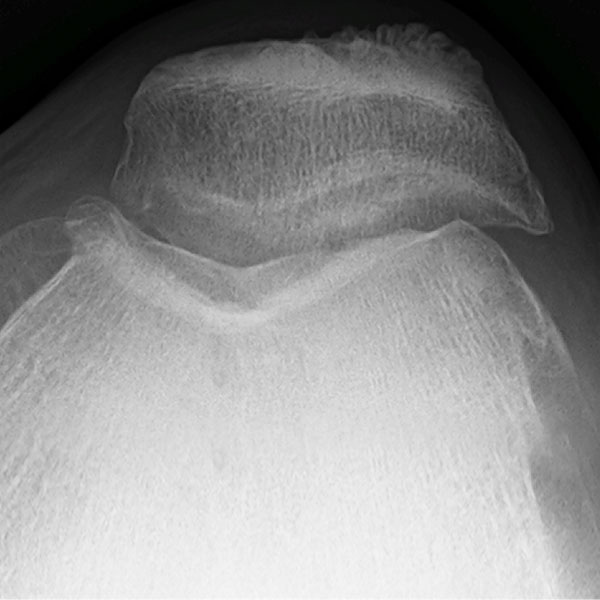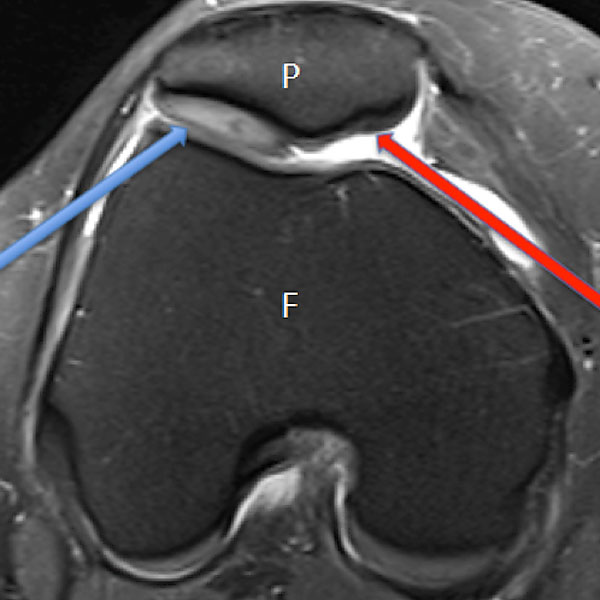What is Patello-femoral Arthritis?
Patello-femoral or knee-cap joint arthritis is wear and tear or degeneration. By itself it is uncommon, and normally occurs with arthritis of either the medial (inside) or lateral (outside) part of the knee joint.
Who gets Patello-femoral arthritis?
- Generally it occurs in people who have osteoarthritis of the knee joint, or those that have inflammatory (rheumatoid, gout, psoriatic) arthritis.
- People who have had a previous injury, such as a patella (knee-cap) dislocation, fracture, injury to the articular cartilage (lining of the joint), or who have chondromalacia patella (softening of the articular cartilage) have an increased chance of developing arthritis.
- Isolated patello-femoral arthritis occurs generally in females of 40-50 years of age.
- People who have had instability or mal-tracking of the patella are at an increased risk of developing arthritis.
What are the symptoms?
Patients typically complain of:
- Anterior knee (at the front of their) pain
- Crepitus (Crunching)
- Swelling
- Difficulty with:
- Kneeling
- stairs
- slopes
- cycling under load
- getting out of chairs
- sitting for long periods of time
Diagnosis
X-rays
Nigel will get x-rays of your knee, to see if there is arthritis present in any other part of the knee.

Magnetic Resonance Imaging (MRI) scan
Nigel will also get a MRI scan of your knee to assess the damage of the articular cartilage (lining of the joint) but also to assess for damage to other structures in the knee such as the meniscus (cartilage that lies between the two bones), ligaments, tendons, and to assess any changes in the bone.
The blue arrow indicates a normal thickness of articular cartilage whilst the red arrow indicates an area where there is no articular cartilage present. This means that there is exposed bone that would be visible in the joint if doing an arthroscopy.
Treatment
Patello-femoral arthritis is difficult to treat. Initially Nigel will advise on non-surgical options, and may ask you to see a:
- Specialist Knee Physiotherapist
- Pain specialist
- Sports medicine physician
Learn more about Non-Surgical Treatment - Knee Osteoarthritis
Surgery
If surgery is needed there are a number of different operations that can be performed and which one is done will depend on the level of your symptoms, and the degree of arthritis.
Arthroscopy
- This would be done to tidy up any pieces of loose articular cartilage and smooth over the articular cartilage.
- It does not stop the progression of arthritis but will hopefully settle down any symptoms of locking, catching, or grating you may experience.
Osteotomy
- Osteotomy is where part of the bone is surgically broken and that broken piece is moved or angled into a new position.
- Osteotomy is not routinely used in patello-femoral arthritis by itself. It is usually done in combination with another procedure. If this is the case Nigel will discuss with you what kind of osteotomy will most suit you.
Joint Preservation.
- Joint preservation is dealt with in more detail in the joint preservation section.
- With respect to patello-femoral arthritis, if only one side of the joint is affected (either the patella or trochlea but not both) then this may be an option.
- The results are good in the majority of cases however there is a relatively higher chance of patient dissatisfaction compared with other parts of the knee joint being operated on for the same kind of condition.
Learn more about Joint Preservation
Patello-femoral or total knee joint replacement
- Is used as a last resort in patients.
- In some patients it is seen as the only viable option.
- Earlier implants had very poor results.
- The next subsequent generation of implants are doing better but the results of these are only short-medium term results up to 5 years.
- The revision rate (that is the need to do a further operation because the first operation has failed) is about 25% at 7 years.
- If you require a revision of your patello-femoral joint replacement this will usually be to a total knee joint replacement.
- Patello-femoral joint replacement is an uncommon procedure and there are very specific indications for patients.
- Nigel will discuss whether you are a candidate for this procedure.



